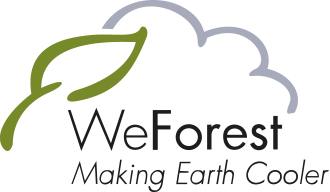
2023 saw the start of the evolution of our twelve years of activities in this area of Tanzania into a holistic approach: Forest and Landscape Restoration.
The 8-year restoration of 1500 ha of degraded forest on hillsides 13 km west of Butiama village will transform this landscape and have a long-term impact. In Phase 1 (2023–2026), nearly 800 ha of agroforestry on smallholder lands – with 1.7 million trees planted – will reduce pressure on forests and improve the livelihoods of the local population.
By the end of 2023, we were doing great: more than 112,000 seedlings had been distributed and planted across 47 ha of land by 145 households already, putting us well on track to reaching our target of 939 families by the end of this first phase!
The participating families and institutions in the older tree-distributing Mara project continue to receive follow-up visits and support from our partner in the field, the Global Resources Alliance (GRA). One of the nurseries that supplied the project continues to provide seedlings for the agroforestry and woodlots programmes of the Butiama Hills project.
The project will be carried out in close collaboration with four adjacent communities: Busegwe, Kigori, Mwikoro and Nyanza. The 8-year restoration of 1500 ha of degraded forest will use the Assisted Natural Regeneration (ANR) approach, as a basic baseline vegetation assessment in 2022 demonstrated that 65 tree species occur and seem to have potential for natural regeneration. These include the near-threatened Dalbergia melanoxylon (African blackwood/grenadilla) and Vepris hanangensis.
Before any ANR maintenance activity begins, it’s important to map the boundaries of the hills and communities so that it’s clear where the area under restoration is, and where activities such as charcoal production are now forbidden. The team have approached technical staff from the government’s National Land use Planning Commission to validate the restoration area as the “Butiama community forest reserve”.
This map shows the restoration area divided into the four villages’ jurisdictions. Beige: boundaries of the 4 villages we are currently working with. Green: the expected hillside forest boundaries (these are preliminary, since boundary mapping with the communities still needs to happen, which might change them). Small purple areas: the agroforestry systems.
Land use plans for all four villages involved are being developed, which include rules and regulations for water sources, grazing lands and settlements. The land use plans will help to manage the restored forest by following the by-laws set out by the communities themselves.
In addition, implementing these plans will help to reduce the conflicts which have previously been associated with land use, particularly among pastoralists and farmers. Village leaders have had power over land use decisions without engaging the community, which has led to problems such as the sale of communal farming land without approval.
The hillsides under restoration will be patrolled to make sure no infractions are committed, such as grazing animals in the Assisted Natural Regeneration areas. Sustainable Forest Management Plans are an important tool to build community awareness about the positive impact of protecting and restoring the landscape here. Community governance structures in the participating villages will be set up, namely Village Natural Resources Committees (VNRCs) that will oversee law enforcement, among other things.
Our agroforestry programme will compensate for the loss of access to wood and fodder. The main focus of 2023 was to establish agroforestry systems with the first farmers, so that communities could witness the benefits to their farmland.
As well as being an alternative source of wood (for firewood and timber) and fodder to feed their animals, which helps to stop deforestation, the agroforestry trees will improve and increase soil and water resources which will increase crop, fruit and vegetables yields – improving household food security and income generation.
The project’s ultimate goal is to enroll 1600 farmers to set up agroforestry and/or woodlot schemes on their farms. The native and exotic tree species interspersed among the crops on the agroforestry plots and grown on the woodlots – which will be sustainably harvested for timber or fuel – will sequester carbon as they grow.
The first activity of the new team was to collect data from the villages where the project will take place to improve the understanding of the social, economic and biophysical context. This was to inform the development of the agroforestry schemes, and align villager needs with our programmes.
A survey was conducted in the villages, two in January and two in April. Some of the findings are listed below.
Farmer registration in our livelihoods programmes was done after this survey data was collected to determine which farmers would participate in which of the agroforestry systems:
It was important to ensure that the farmers’ land met certain criteria to participate in the project, such as having enough hectarage and access to water. In Cohort A, which are the farmers that were signed up during 2023, there are 145 members.
An important early step was to select and train 14 lead farmers who will each head a smaller group of the Cohort A farmers, and support the implementation and monitoring of their farmers’ agroforestry plots. They were given booklets in Swahili outlining their roles and responsibilities.
Another important activity was setup and management of the agroforestry demonstration plot. This 1 hectare plot adjacent to the nursery is used during the agroforestry training sessions.
Agroforestry training includes practical demonstrations of how horizontal and vertical space is optimized, how crops are planted and harvested at different times, how trees and crops grown together can improve nutrients in the soil, and how natural fertilizer can be mixed on site and used.
The first Farmer Workshop took place on this agroforestry demonstration site to provide a practical on the fundamentals of agroforestry. The other workshops took place for each farmer group on a selected member’s farm. The practicals on the demo plot form part of the training in agroforestry, which took place between July and September.
The training sessions also cover theoretical aspects: how agroforestry helps to improve natural resources such as soil and water, provides enough food through the year, and allows farmers to harvest a surplus of crops to generate income. The farmers also learn how the diversity of agroforestry protects crops from devastating pests and disease outbreaks, provides a diversity of food throughout the year, and has better yields than conventional agriculture.
With the farmers trained, the rest of 2023 was spent preparing for and establishing the agroforestry plots. The 145 farmers in Cohort A received 112,309 seedlings in October and November for planting.
Agroforestry system | Species planted | Agroforestry system | Species planted |
|---|---|---|---|
Cash crops and fodder | Grevillea robusta | Fruit trees
| Persea americana (grafted avocados) |
Cash crops and fodder | Senegalia polyacantha (Acacia) | Fruit trees | Annona muricata |
Cash crops and fodder | Markhamia lutea | Fruit trees | Tamarindus indica |
Cash crops and fodder | Faidherbia albida | Fruit trees | Carica papaya (papaya) |
Cash crops and fodder | Leucaena leucocephala | Mixed woodlot | Albizia lebbeck |
Cash crops and fodder | Calliandra calothyrsus | Mixed woodlot | Casuarina equisetifolia |
Cash crops and fodder; vegetables | Gliricidia sepium | Mixed woodlot | Cedrela oradata |
Cash crops and fodder; vegetables | Moringa oleifera | Mixed woodlot | Khaya anthotheca |
Vegetables | Tephrosia vogeli | Mixed woodlot | Tectona grandis |
Fruit trees | Mangifera indica (grafted mangoes) | ||
After planting, at the end of the year, all 145 farmers from the Cohort A were visited by the agroforestry team to:
Rains followed by drought and then very heavy rainfall during seedling distribution had worried the team, but most of the farmers say that they faced no issues during planting. On average it had taken them days to prepare their land, with most receiving support to do this from their family members.
The mortality of the seedlings in both the nursery and distribution process were a bit above average, but that is typical for the first year of a project. The team has improved their nursery operations and management procedures and future distribution will include improvement in transport to the farmers to drop off their seedlings.
Agroforestry combines agriculture and trees. Trees and shrubs are grown around or among crops or pastureland. It plays a critical role in successful forest restoration by:
The value of an agroforestry system is in its diversity; selecting and distributing a variety of environmentally and socially appropriate tree species. In Tanzania, our programme grows between 45-70 species each year that have specific uses.
Some trees, such as timber, are harvested and ideally replaced. Planting fast-growing species in dedicated woodlots reduces pressure on the natural and degraded forests we are working to restore. Others, such as fruit and nitrogen-fixing trees, are pruned year after year providing food, soil fertility and numerous other benefits. Of course, all the types of trees sequester carbon as they grow.
Please visit our What We Do web page for more information.
Thank you for supporting the Butiama and Mara projects!
HQ (BE): WeForest asbl/vzw
Cantersteen 47, 1000 Brussels, Belgium
VAT number BE0826.151.968
Incorporated May 26th 2010
WeForest is a supporting member of:





| Cookie | Duration | Description |
|---|---|---|
| __cf_bm | 1 hour | This cookie, set by Cloudflare, is used to support Cloudflare Bot Management. |
| _GRECAPTCHA | 6 months | Google Recaptcha service sets this cookie to identify bots to protect the website against malicious spam attacks. |
| cookielawinfo-checbox-analytics | 11 months | This cookie is set by GDPR Cookie Consent plugin. The cookie is used to store the user consent for the cookies in the category "Analytics". |
| cookielawinfo-checbox-functional | 11 months | The cookie is set by GDPR cookie consent to record the user consent for the cookies in the category "Functional". |
| cookielawinfo-checbox-others | 11 months | This cookie is set by GDPR Cookie Consent plugin. The cookie is used to store the user consent for the cookies in the category "Other. |
| cookielawinfo-checkbox-advertisement | 1 year | Set by the GDPR Cookie Consent plugin, this cookie records the user consent for the cookies in the "Advertisement" category. |
| cookielawinfo-checkbox-necessary | 11 months | This cookie is set by GDPR Cookie Consent plugin. The cookies is used to store the user consent for the cookies in the category "Necessary". |
| cookielawinfo-checkbox-performance | 11 months | This cookie is set by GDPR Cookie Consent plugin. The cookie is used to store the user consent for the cookies in the category "Performance". |
| CookieLawInfoConsent | 1 year | CookieYes sets this cookie to record the default button state of the corresponding category and the status of CCPA. It works only in coordination with the primary cookie. |
| elementor | never | The website's WordPress theme uses this cookie. It allows the website owner to implement or change the website's content in real-time. |
| JSESSIONID | session | New Relic uses this cookie to store a session identifier so that New Relic can monitor session counts for an application. |
| Path | session | Description is currently not available. |
| viewed_cookie_policy | 11 months | The cookie is set by the GDPR Cookie Consent plugin and is used to store whether or not user has consented to the use of cookies. It does not store any personal data. |
| Cookie | Duration | Description |
|---|---|---|
| _hjAbsoluteSessionInProgress | 1 hour | Hotjar sets this cookie to detect a user's first pageview session, which is a True/False flag set by the cookie. |
| _hjIncludedInSessionSample_2773626 | 1 hour | Description is currently not available. |
| aka_debug | session | Vimeo sets this cookie which is essential for the website to play video functionality. |
| authstrategy | session | Description is currently not available. |
| li_gc | 6 months | Linkedin set this cookie for storing visitor's consent regarding using cookies for non-essential purposes. |
| lidc | 1 day | LinkedIn sets the lidc cookie to facilitate data center selection. |
| pll_language | 1 year | Polylang sets this cookie to remember the language the user selects when returning to the website and get the language information when unavailable in another way. |
| UserMatchHistory | 1 month | LinkedIn sets this cookie for LinkedIn Ads ID syncing. |
| Cookie | Duration | Description |
|---|---|---|
| SRM_B | 1 year 24 days | Used by Microsoft Advertising as a unique ID for visitors. |
| Cookie | Duration | Description |
|---|---|---|
| _ga | 1 year 1 month 4 days | Google Analytics sets this cookie to calculate visitor, session and campaign data and track site usage for the site's analytics report. The cookie stores information anonymously and assigns a randomly generated number to recognise unique visitors. |
| _ga_* | 1 year 1 month 4 days | Google Analytics sets this cookie to store and count page views. |
| _gcl_au | 3 months | Google Tag Manager sets the cookie to experiment advertisement efficiency of websites using their services. |
| _hjFirstSeen | 1 hour | Hotjar sets this cookie to identify a new user’s first session. It stores the true/false value, indicating whether it was the first time Hotjar saw this user. |
| _hjSession_* | 1 hour | Hotjar sets this cookie to ensure data from subsequent visits to the same site is attributed to the same user ID, which persists in the Hotjar User ID, which is unique to that site. |
| _hjSessionUser_* | 1 year | Hotjar sets this cookie to ensure data from subsequent visits to the same site is attributed to the same user ID, which persists in the Hotjar User ID, which is unique to that site. |
| ajs_anonymous_id | 1 year | This cookie is set by Segment to count the number of people who visit a certain site by tracking if they have visited before. |
| ajs_group_id | 1 year | This cookie is set by Segment to track visitor usage and events within the website. |
| ajs_user_id | 1 year | This cookie is set by Segment to help track visitor usage, events, target marketing, and also measure application performance and stability. |
| AnalyticsSyncHistory | 1 month | Linkedin set this cookie to store information about the time a sync took place with the lms_analytics cookie. |
| CLID | 1 year | Microsoft Clarity set this cookie to store information about how visitors interact with the website. The cookie helps to provide an analysis report. The data collection includes the number of visitors, where they visit the website, and the pages visited. |
| CONSENT | 2 years | YouTube sets this cookie via embedded YouTube videos and registers anonymous statistical data. |
| MR | 7 days | This cookie, set by Bing, is used to collect user information for analytics purposes. |
| s_vi | 2 years | An Adobe Analytics cookie that uses a unique visitor ID time/date stamp to identify a unique vistor to the website. |
| SM | session | Microsoft Clarity cookie set this cookie for synchronizing the MUID across Microsoft domains. |
| VISITOR_PRIVACY_METADATA | 6 months | Description is currently not available. |
| vuid | 1 year 1 month 4 days | Vimeo installs this cookie to collect tracking information by setting a unique ID to embed videos on the website. |
| Cookie | Duration | Description |
|---|---|---|
| ANONCHK | 10 minutes | The ANONCHK cookie, set by Bing, is used to store a user's session ID and verify ads' clicks on the Bing search engine. The cookie helps in reporting and personalization as well. |
| bcookie | 1 year | LinkedIn sets this cookie from LinkedIn share buttons and ad tags to recognize browser IDs. |
| bscookie | 1 year | LinkedIn sets this cookie to store performed actions on the website. |
| IDE | 1 year 24 days 1 minute | Google DoubleClick IDE cookies store information about how the user uses the website to present them with relevant ads according to the user profile. |
| li_sugr | 3 months | LinkedIn sets this cookie to collect user behaviour data to optimise the website and make advertisements on the website more relevant. |
| muc_ads | 1 year 1 month 4 days | Twitter sets this cookie to collect user behaviour and interaction data to optimize the website. |
| MUID | 1 year 24 days | Bing sets this cookie to recognise unique web browsers visiting Microsoft sites. This cookie is used for advertising, site analytics, and other operations. |
| personalization_id | 1 year 1 month 4 days | Twitter sets this cookie to integrate and share features for social media and also store information about how the user uses the website, for tracking and targeting. |
| test_cookie | 15 minutes | doubleclick.net sets this cookie to determine if the user's browser supports cookies. |
| VISITOR_INFO1_LIVE | 6 months | YouTube sets this cookie to measure bandwidth, determining whether the user gets the new or old player interface. |
| YSC | session | Youtube sets this cookie to track the views of embedded videos on Youtube pages. |
| yt-remote-connected-devices | never | YouTube sets this cookie to store the user's video preferences using embedded YouTube videos. |
| yt-remote-device-id | never | YouTube sets this cookie to store the user's video preferences using embedded YouTube videos. |
| yt.innertube::nextId | never | YouTube sets this cookie to register a unique ID to store data on what videos from YouTube the user has seen. |
| yt.innertube::requests | never | YouTube sets this cookie to register a unique ID to store data on what videos from YouTube the user has seen. |
| Cookie | Duration | Description |
|---|---|---|
| __tld__ | session | Description is currently not available. |
| ajscookies | 1 year | No description available. |
| ajstest | 1 year | No description available. |
| debug | never | No description available. |